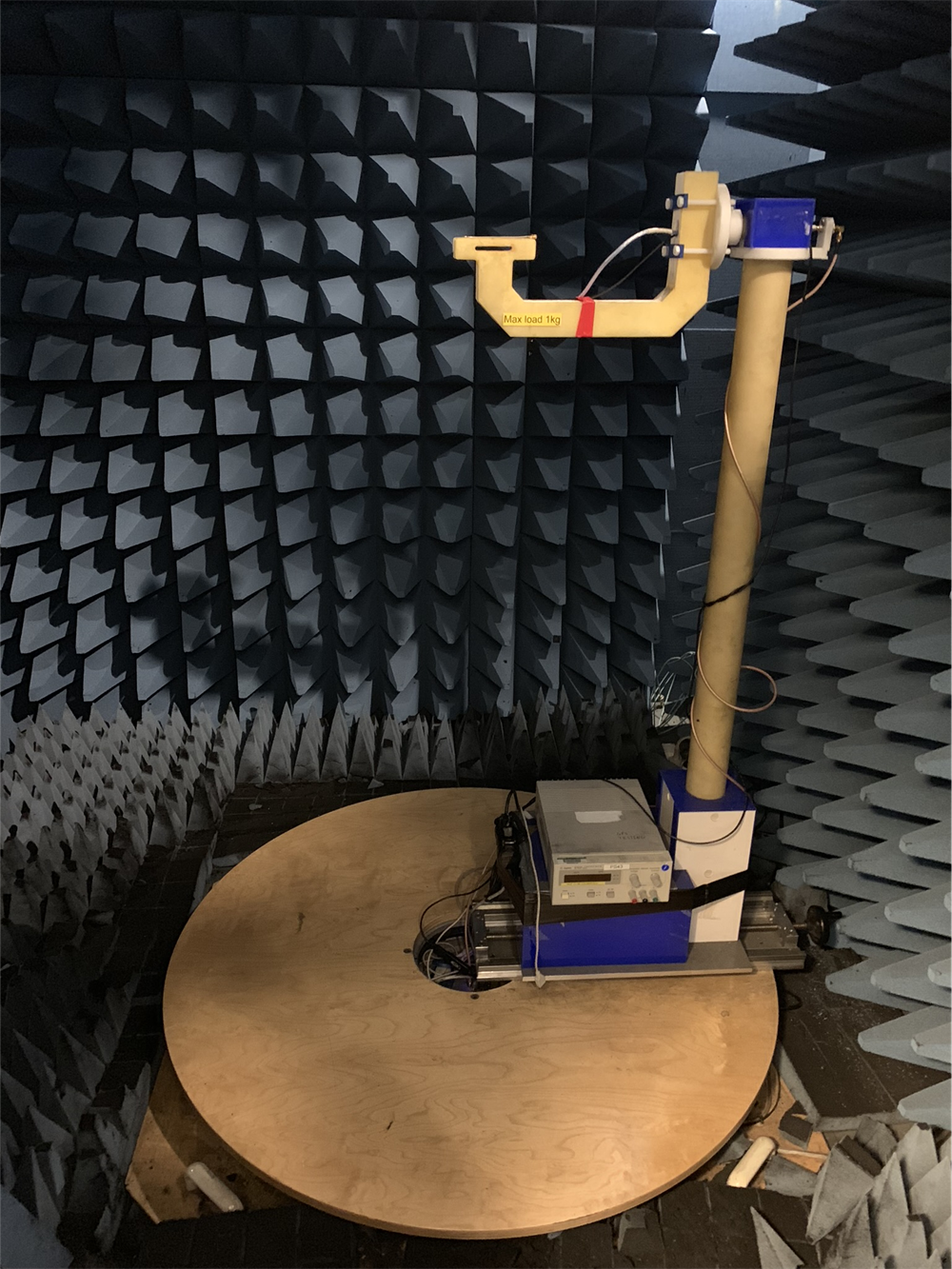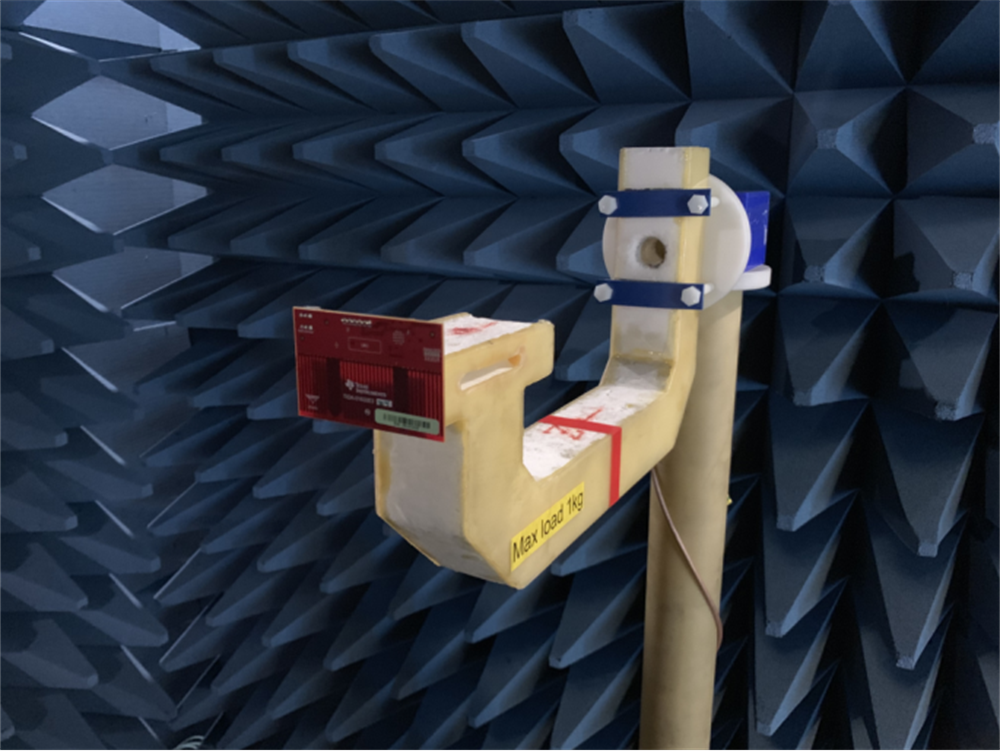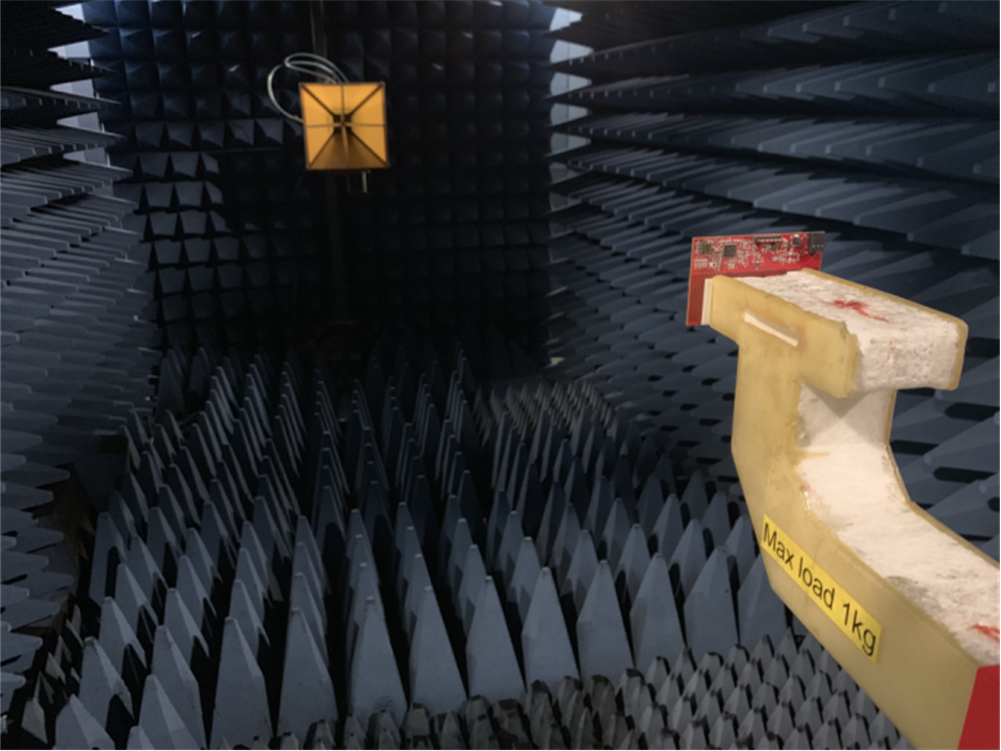TIDA029A july 2019 – june 2023 CC2640R2F-Q1 , CC2642R , CC2642R-Q1
- 1
- Bluetooth Angle of Arrival (AoA) Antenna Design
- Trademarks
- 1Introduction
- 2Angle of Arrival Antenna Design Considerations
- 3Dipole Antenna Array
- 4Calculating AoA From IQ Measurements
- 5References
- 6Revision History
3.4 Two Dipole Array Test Results
The following sections show various test results based off the TIDA-01632 antenna design. All test results were taken in an anechoic chamber using the turntable shown in Figure 3-13, capable of rotating the base and the arm by 1° increments.
 Figure 3-13 Turntable Test Setup
Figure 3-13 Turntable Test SetupFigure 3-14 shows the TIDA-01632 PCB mounted on the arm of the turntable and Figure 3-15 shows the rest of the anechoic chamber.
 Figure 3-14 PCB Mounted on Turntable Arm
Figure 3-14 PCB Mounted on Turntable Arm Figure 3-15 Anechoic Chamber
Figure 3-15 Anechoic Chamber